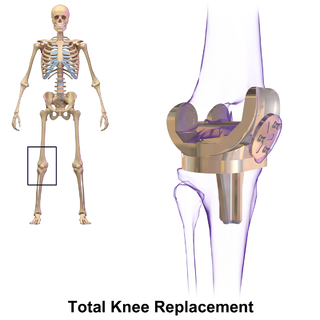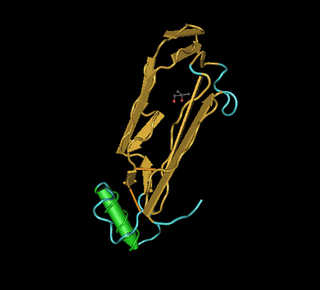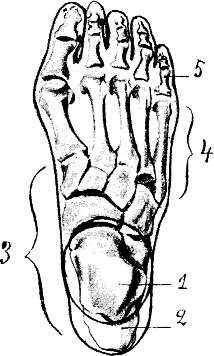Related Research Articles

Pes cavus, also known as high arch, is a human foot type in which the sole of the foot is distinctly hollow when bearing weight. That is, there is a fixed plantar flexion of the foot. A high arch is the opposite of a flat foot and is somewhat less common.

Genu valgum, commonly called "knock-knee", is a condition in which the knees angle in and touch each other when the legs are straightened. Individuals with severe valgus deformities are typically unable to touch their feet together while simultaneously straightening the legs. The term originates from the Latin genu, 'knee', and valgus which means "bent outwards", but is also used to describe the distal portion of the knee joint which bends outwards and thus the proximal portion seems to be bent inwards.

Genu varum is a varus deformity marked by (outward) bowing at the knee, which means that the lower leg is angled inward (medially) in relation to the thigh's axis, giving the limb overall the appearance of an archer's bow. Usually medial angulation of both lower limb bones is involved.

A Lisfranc injury, also known as Lisfranc fracture, is an injury of the foot in which one or more of the metatarsal bones are displaced from the tarsus.

Knee replacement, also known as knee arthroplasty, is a surgical procedure to replace the weight-bearing surfaces of the knee joint to relieve pain and disability, most commonly offered when joint pain is not diminished by conservative sources. It may also be performed for other knee diseases, such as rheumatoid arthritis. In patients with severe deformity from advanced rheumatoid arthritis, trauma, or long-standing osteoarthritis, the surgery may be more complicated and carry higher risk. Osteoporosis does not typically cause knee pain, deformity, or inflammation, and is not a reason to perform knee replacement.

Joint replacement is a procedure of orthopedic surgery known also as arthroplasty, in which an arthritic or dysfunctional joint surface is replaced with an orthopedic prosthesis. Joint replacement is considered as a treatment when severe joint pain or dysfunction is not alleviated by less-invasive therapies. Joint replacement surgery is often indicated from various joint diseases, including osteoarthritis and rheumatoid arthritis.

Bone morphogenetic protein 2 or BMP-2 belongs to the TGF-β superfamily of proteins.

The epiphyseal plate is a hyaline cartilage plate in the metaphysis at each end of a long bone. It is the part of a long bone where new bone growth takes place; that is, the whole bone is alive, with maintenance remodeling throughout its existing bone tissue, but the growth plate is the place where the long bone grows longer.

Hallux rigidus or stiff big toe is degenerative arthritis and stiffness due to bone spurs that affects the metatarsophalangeal joints (MTP) at the base of the hallux.

Ollier disease is a rare sporadic nonhereditary skeletal disorder in which typically benign cartilaginous tumors (enchondromas) develop near the growth plate cartilage. This is caused by cartilage rests that grow and reside within the metaphysis or diaphysis and eventually mineralize over time to form multiple enchondromas. Key signs of the disorder include asymmetry and shortening of the limb as well as an increased thickness of the bone margin. These symptoms are typically first visible during early childhood with the mean age of diagnosis being 13 years of age. Many patients with Ollier disease are prone to develop other malignancies including bone sarcomas that necessitate treatment and the removal of malignant bone neoplasm. Cases in patients with Ollier disease has shown a link to IDH1, IDH2, and PTH1R gene mutations. Currently, there are no forms of treatment for the underlying condition of Ollier disease but complications such as fractures, deformities, malignancies that arise from it can be treated through surgical procedures. The prevalence of this condition is estimated at around 1 in 100,000. It is unclear whether the men or women are more affected by this disorder due to conflicting case studies.

Unicompartmental knee arthroplasty (UKA) is a surgical procedure used to relieve arthritis in one of the knee compartments in which the damaged parts of the knee are replaced. UKA surgery may reduce post-operative pain and have a shorter recovery period than a total knee replacement procedure, particularly in people over 75 years of age. Moreover, UKAs may require a smaller incision, less tissue damage, and faster recovery times.
Macrodystrophia lipomatosa (ML) is a rare congenital disorder characterized by localised overgrowth of a part of an extremity or less commonly a whole extremity. The involvement of more than one extremity is even more uncommon. There is a slight predilection for the lower limb affection, namely the foot. The overgrown region consists predominantly of adipose tissue, but other tissue components that represent the mesenchyme may be involved.
Ankle replacement, or ankle arthroplasty, is a surgical procedure to replace the damaged articular surfaces of the human ankle joint with prosthetic components. This procedure is becoming the treatment of choice for patients requiring arthroplasty, replacing the conventional use of arthrodesis, i.e. fusion of the bones. The restoration of range of motion is the key feature in favor of ankle replacement with respect to arthrodesis. However, clinical evidence of the superiority of the former has only been demonstrated for particular isolated implant designs.
The Bosworth fracture is a rare fracture of the distal fibula with an associated fixed posterior dislocation of the proximal fibular fragment which becomes trapped behind the posterior tibial tubercle. The injury is caused by severe external rotation of the ankle. The ankle remains externally rotated after the injury, making interpretation of X-rays difficult which can lead to misdiagnosis and incorrect treatment. The injury is most commonly treated by open reduction internal fixation as closed reduction is made difficult by the entrapment of the fibula behind the tibia.

Wrist osteoarthritis is gradual loss of articular cartilage and hypertrophic bone changes (osteophytes). While in many joints this is part of normal aging (senescence), in the wrist osteoarthritis usually occurs over years to decades after scapholunate interosseous ligament rupture or an unhealed fracture of the scaphoid. Characteristic symptoms including pain, deformity and stiffness. Pain intensity and incapability are notably variable and do not correspond with arthritis severity on radiographs.

Trapeziometacarpal osteoarthritis (TMC OA) is, also known as osteoarthritis at the base of the thumb, thumb carpometacarpal osteoarthritis, basilar (or basal) joint arthritis, or as rhizarthrosis. This joint is formed by the trapezium bone of the wrist and the metacarpal bone of the thumb. This is one of the joints where most humans develop osteoarthritis with age. Osteoarthritis is age-related loss of the smooth surface of the bone where it moves against another bone (cartilage of the joint). In reaction to the loss of cartilage, the bones thicken at the joint surface, resulting in subchondral sclerosis. Also, bony outgrowths, called osteophytes (also known as “bone spurs”), are formed at the joint margins.

Syndesmosis procedure is one of the more than twenty bunion surgeries currently being performed. While the majority of bunion surgeries involve the breaking and shifting of bones, syndesmosis procedure is one of few surgical techniques that use a soft-tissue or non-osteotomy (non-bone-breaking) approach to afford the same correction. More than 130 different surgical techniques have been described for correction of one single condition of the foot: the bunion deformity.
The sacroiliac joint is a paired joint in the pelvis that lies between the sacrum and an ilium. Due to its location in the lower back, a dysfunctional sacroiliac joint may cause lower back and/or leg pain. The resulting leg pain can be severe, resembling sciatica or a slipped disc. While nonsurgical treatments are effective for some, others have found that surgery for the dysfunctional sacroiliac joint is the only method to relieve pain.

A proximal humerus fracture is a break of the upper part of the bone of the arm (humerus). Symptoms include pain, swelling, and a decreased ability to move the shoulder. Complications may include axillary nerve or axillary artery injury.
Martinus Richter is a German orthopaedic surgeon, and Associate Professor at the Hannover Medical School and Head of the Department for Foot and Ankle Surgery Nuremberg and Rummelsberg at the Hospital Rummelsberg and Sana-Hospital Nuremberg.
References
- 1 2 3 4 Manke E, Yeo Eng Meng N, Rammelt S (2020). "Ankle Arthrodesis - a Review of Current Techniques and Results". Acta Chir Orthop Traumatol Cech. 87 (4): 225–236. doi:10.55095/achot2020/035. PMID 32940217.
- ↑ Goldberg, Andrew J.; Chowdhury, Kashfia; Bordea, Ekaterina; Blackstone, James; Brooking, Deirdre; Deane, Elizabeth L.; Hauptmannova, Iva; Cooke, Paul; Cumbers, Marion; Skene, Simon S.; Doré, Caroline J. (2023-03-30). "Total ankle replacement versus ankle arthrodesis for patients aged 50 85 years with end-stage ankle osteoarthritis: the TARVA RCT". Health Technology Assessment. 27 (5): 1–80. doi:10.3310/PTYJ1146. ISSN 2046-4924. PMC 10150410 . PMID 37022932.
- ↑ "Severe ankle osteoarthritis: which surgery should I have?". NIHR Evidence. 9 January 2024.
- 1 2 3 Shah KS, Younger AS (March 2011). "Primary tibiotalocalcaneal arthrodesis". Foot Ankle Clin. 16 (1): 115–36. doi:10.1016/j.fcl.2010.12.001. PMID 21338935.
- 1 2 Burns PR, Dunse A (July 2017). "Tibiotalocalcaneal Arthrodesis for Foot and Ankle Deformities". Clin Podiatr Med Surg. 34 (3): 357–380. doi:10.1016/j.cpm.2017.02.007. PMID 28576195.
- 1 2 Asomugha EU, Den Hartog BD, Junko JT, Alexander IJ (March 2016). "Tibiotalocalcaneal Fusion for Severe Deformity and Bone Loss". J Am Acad Orthop Surg. 24 (3): 125–34. doi:10.5435/JAAOS-D-14-00102. PMID 26829585. S2CID 42817431.
- ↑ Kim C, Catanzariti AR, Mendicino RW (April 2009). "Tibiotalocalcaneal arthrodesis for salvage of severe ankle degeneration". Clin Podiatr Med Surg. 26 (2): 283–302. doi:10.1016/j.cpm.2008.12.009. PMID 19389600.
- ↑ Yang, Chalen; Spacek, Ashley E.; Abicht, Bradly P. (2023). "Tibiotalocalcaneal arthrodesis using a posteriorly angled nail for definitive fixation augmented with fibular onlay graft and autogenous tibial bone graft within the surgical technique of retrograde-delivered locked compression nail: A case series". Foot & Ankle Surgery: Techniques, Reports & Cases. 3 (3): 100307. doi:10.1016/j.fastrc.2023.100307. ISSN 2667-3967. S2CID 259256059.
- 1 2 3 4 5 6 7 8 Jehan S, Shakeel M, Bing AJ, Hill SO (October 2011). "The success of tibiotalocalcaneal arthrodesis with intramedullary nailing--a systematic review of the literature". Acta Orthop Belg. 77 (5): 644–51. PMID 22187841.
- 1 2 Franceschi F, Franceschetti E, Torre G, Papalia R, Samuelsson K, Karlsson J, Denaro V (April 2016). "Tibiotalocalcaneal arthrodesis using an intramedullary nail: a systematic review". Knee Surg Sports Traumatol Arthrosc. 24 (4): 1316–25. doi:10.1007/s00167-015-3548-1. PMID 25715850. S2CID 22264469.